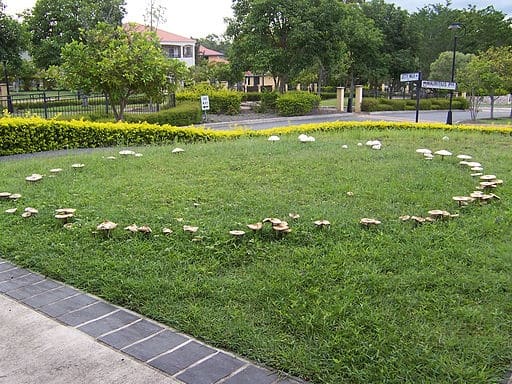Why extract mushrooms?
Once, I found a ring of mushrooms in my yard that hadn’t been there the evening before. It was nearly a perfect circle. It had never appeared before and, after it vanished a day or two later, it never appeared again. The mushroom ring projected thoughts of fungal crop circles or fairy or gnome cities, and later, I learned it was called a fairy ring or witches’ circle.
There’s folklore regarding the appearance of these structures, such as their being sites where elves or fairies or witches had danced. Some legends say that anyone who ventures into an empty fairy ring will die at an early age. Other stories report that those who violate the circle will become invisible to mortals outside of the ring. Unfortunately, I can’t remember if I entered the ring…
Mushrooms are seemingly otherworldly, steeped in the supernatural, like those that can take us on life-changing journeys. For many people, their mushroom experience might be little more than the standard decent but drab white button mushrooms; however, there are many more types of mushrooms and fungi, in general, that offer medicinal benefits. As with cannabis (and coffee, tea, beer), the extraction of specific molecules in the plant provides a simpler way to analyze their individual therapeutic power.
The medicines within the mushrooms aren’t always the same molecules. Some are triterpenoids, with three units hand-in-hand; others are polysaccharides, which are longer chains of sugar molecules, linked together. Terpenoids from mushrooms have demonstrated anticancer, antiviral, antibacterial, and anti-inflammatory properties, just to name a few. A 2015 review paper collated 285 terpenoids isolated from mushrooms that have medicinal potential. [1] Ganoderma pfeifferi, for example, has several terpenoids with names like lucialdehyde D and ganoderone A that have demonstrated antiviral properties against influenza A and herpes simplex type I viruses. [2]
The bitter hedgehog mushroom, Hydnellum scabrosum or Sarcodon scabrosus, contains diterpenoids called scabronines, sarcodonins, and sarcodonin G that can prevent human cancer cell lines from proliferating, stopping the cancer’s growth. [3] This property has been established in ovarian, glioma (brain and spinal cord cancer), and melanoma (skin cancer) cells, to name a few.
An evaluation of polysaccharides in mushrooms reported that antitumor, immunomodulatory, and anti-inflammatory properties presented the top three health benefits. [4] Furthermore, polysaccharides can improve human gut health.
These exemplary studies illustrate the medical efficacy of mushrooms, bolstering a deeper dive into the plants’ chemistries through extraction. Unlike lipophilic (fat-loving) cannabinoids and most terpenes [5], triterpenes are generally soluble in water. Polysaccharides aren’t as cut and dry, however, and may require different extraction strategies, altogether. We’ll pick up here in chapter two. Stay tuned…
References
- Duru, M. and Çayan, G. “Biologically Active Terpenoids from Mushroom Origin: A Review.” Rec. Nat. Prod., vol. 9, no. 4, 2015, pp. 456-483. [journal impact factor = 1.205; Timed Cited = 25 (ResearchGate)]
- Niedermeyer, T. et al. “Antiviral Terpenoid Constituents of Ganoderma pfeifferi.” J. Nat. Prod., vol. 68, 2005, pp. 1728-1731. [journal impact factor = 4.257; Timed Cited = 54 (Semantic Scholar)]
- Dong, M. et al. “Anti-Proliferative and Apoptosis Inducible Activity of Sarcodonin G from Sarcodon scabrosus in Hela Cells.” Int. J. Oncol., vol. 34, 2009, pp. 201-207. [journal impact factor = 3.571; Timed Cited = 12 (Semantic Scholar)]
- Ma, G. et al. “A Critical Review on the Health Promoting Effects of Mushrooms Nutraceuticals.” Food Science and Human Wellness, vol. 7, 2018, pp. 125-133. [journal impact factor = N/A; Timed Cited = 12 (Semantic Scholar)]
- Weidenhamer, J. et al. “Just How Insoluble are Monoterpenes.” J Chem Ecol, vol. 19, 1993, pp. 1799–1807. [journal impact factor = 2.447; Timed Cited = 77 (Semantic Scholar)]
Image Credits: Mrs skippy











